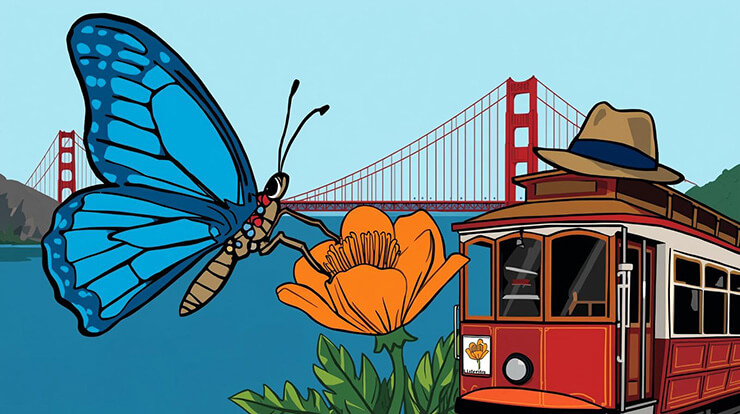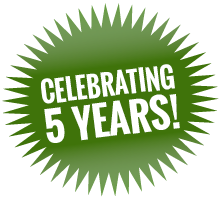Read by Michael Flamel

As a lifelong lover of San Francisco—its fog-kissed mornings, its clang-clanging cable cars, and yes, the soulful voice of Tony Bennett—I’ve just heard news that has my garden gloves in a twist of delight: The Xerces Blue butterfly, long thought extinct, has returned to the Presidio!
Let me say that again.
The Xerces Blue is back.
Cue the trumpets, or better yet, cue Tony singing “I Left My Heart in San Francisco,” because if ever there were a comeback worth crooning about, this is it.
A Little Blue Beauty, Long Lost
The Xerces Blue (Glaucopsyche xerces) was the first butterfly species in the United States thought to have gone extinct due to human activity. Native only to the coastal sand dunes of the San Francisco Peninsula, this shimmering blue pollinator fluttered into history books in the early 1940s, its habitat gobbled up by postwar development.
But in a heartwarming twist worthy of a Pixar movie (or maybe a foggy day miracle), scientists and conservationists have been working for decades to bring its close cousin, the Silvery Blue butterfly, into the area—carefully restoring native plants like lupine and deerweed that the Xerces Blue once depended on.
And now, thanks to an ambitious ecological restoration project in the Presidio—a former Army base turned national park—a butterfly population genetically identical to the Xerces has been reintroduced. It’s not just an environmental triumph; it’s a resurrection.
Pollinators: The Unsung Heroes of American Life
Now, dear readers, let’s not just celebrate with butterfly-shaped cookies and wildflower seed packets (although, honestly, do both). This story is about more than one species. It’s about all pollinators—bees, butterflies, moths, beetles, bats, and birds—whose survival quite literally affects our own.
Pollinators are responsible for one in every three bites of food we eat. They keep our gardens thriving, our wildlands blooming, and our ecosystems in balance. Without them, we wouldn’t have almonds, apples, squash, tomatoes—or any of the colorful bounty that makes gardening so joyful.
And yet, pollinator populations have been in steep decline across the U.S., largely due to habitat loss, pesticide use, and climate change. That’s why the Xerces Blue’s return to San Francisco is more than just a localized flutter-by. It’s a symbol of hope—proof that with enough passion, planting, and patience, we can bring the blues (and the bees and the birds) back where they belong.
Plant It and They Will Come
As gardeners, we’re not just hobbyists—we’re homebuilders for pollinators. Native flowers like milkweed, yarrow, lupine, and goldenrod provide critical nectar and habitat. Letting a little wildness into your yard—whether it’s a patch of unmown lawn or a dedicated pollinator garden—can make a real difference.
If the Presidio can welcome back a species thought to be lost forever, imagine what your backyard might do with a few native plants and an open heart.
So, the next time you’re out in your garden, listening to the bees’ buzz and admiring the gentle wings of a butterfly, tip your hat to the Presidio—and to all the tireless ecologists and gardeners who made this little miracle possible.
And maybe, just maybe, hum a few bars of “The loveliness of Paris… seems somehow sadly gay…”
Because the blue butterflies of San Francisco are back—and that’s music to my ears.
Your intrepid gardening reporter,
Don Nicholas
P.S. Want to turn your garden into a butterfly haven? Check out our Pollinator Gardening in America GuideBook to make your own master plan. ❖


 Previous
Previous



Thank you for putting Tony Bennett together with Pollinators. I was in Berkeley doing a workshop on telling social justice stories to children when the Tony Bennett statue was dedicated at the Hotel where he first sang I LEFT MY HEART . . . As a Veteran, and pollinator supporter, I know Bennett’s World War II combat experience made him a lifelong advocate for nonviolence. He was one of the first white celebrities to become a total supporter in the civil rights work ignited by Dr. Martin Luther King.